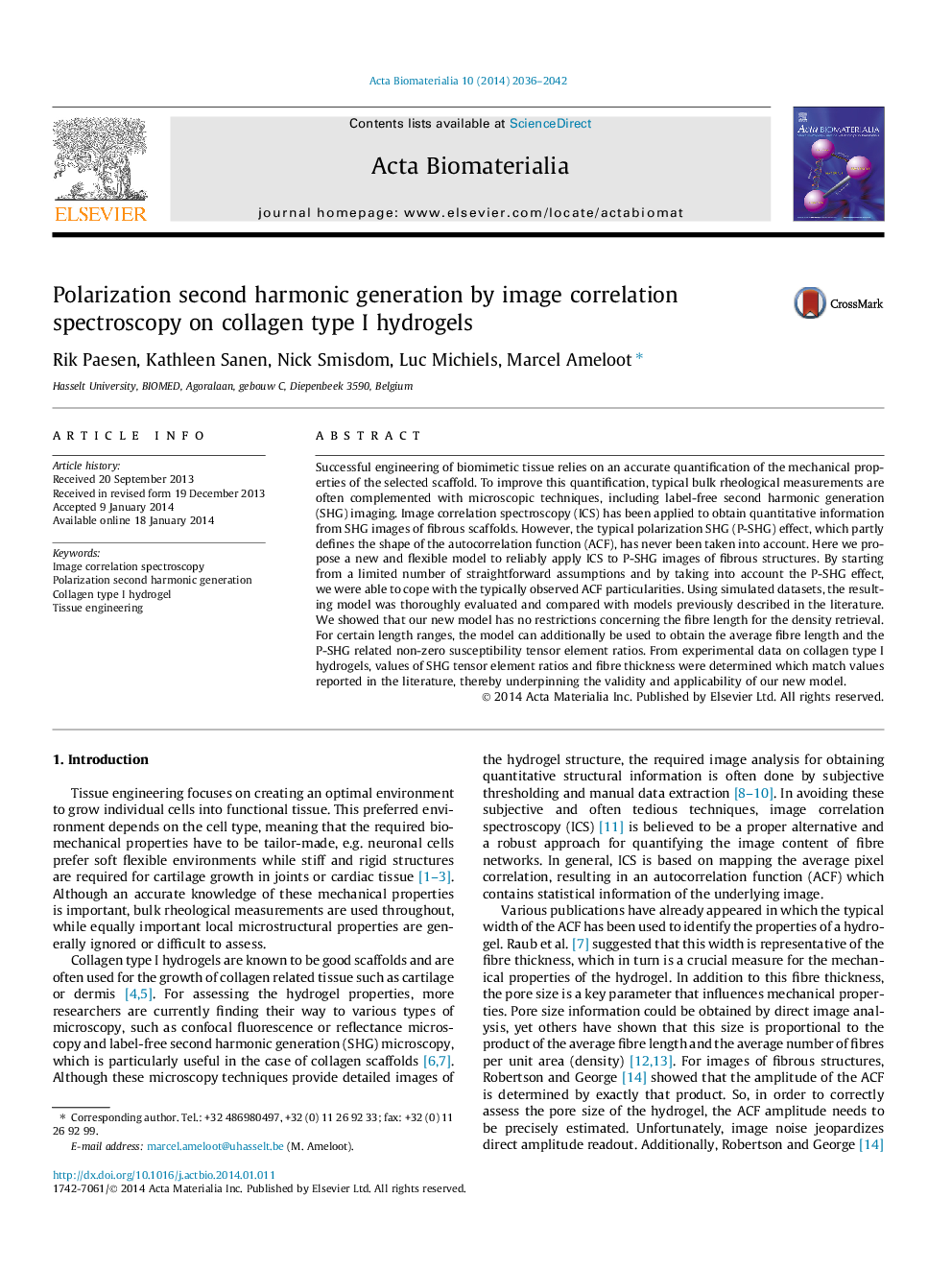| Article ID | Journal | Published Year | Pages | File Type |
|---|---|---|---|---|
| 10159200 | Acta Biomaterialia | 2014 | 7 Pages |
Abstract
Successful engineering of biomimetic tissue relies on an accurate quantification of the mechanical properties of the selected scaffold. To improve this quantification, typical bulk rheological measurements are often complemented with microscopic techniques, including label-free second harmonic generation (SHG) imaging. Image correlation spectroscopy (ICS) has been applied to obtain quantitative information from SHG images of fibrous scaffolds. However, the typical polarization SHG (P-SHG) effect, which partly defines the shape of the autocorrelation function (ACF), has never been taken into account. Here we propose a new and flexible model to reliably apply ICS to P-SHG images of fibrous structures. By starting from a limited number of straightforward assumptions and by taking into account the P-SHG effect, we were able to cope with the typically observed ACF particularities. Using simulated datasets, the resulting model was thoroughly evaluated and compared with models previously described in the literature. We showed that our new model has no restrictions concerning the fibre length for the density retrieval. For certain length ranges, the model can additionally be used to obtain the average fibre length and the P-SHG related non-zero susceptibility tensor element ratios. From experimental data on collagen type I hydrogels, values of SHG tensor element ratios and fibre thickness were determined which match values reported in the literature, thereby underpinning the validity and applicability of our new model.
Related Topics
Physical Sciences and Engineering
Chemical Engineering
Bioengineering
Authors
Rik Paesen, Kathleen Sanen, Nick Smisdom, Luc Michiels, Marcel Ameloot,
